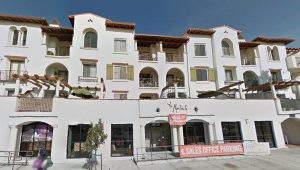
A well-known Facebook troll posted a response to Councilman Nils Nehrenheim’s alert to his constituents that the City’s moratorium on new mixed-use high-density development projects had not been extended by the City Council, despite a 3-2 vote in favor (it required a minimum 4-1 minimum vote). The troll’s cheer for the moratorium-extension defeat is “The YIMBYs win another one”. The troll’s post, perhaps inadvertently, highlights an important difference in viewpoints applicable to many of the issues facing Redondo Beach residents and their decisions regarding the future of the city.
The purpose of the mixed-use high-density building moratorium is to stop new such project applications while the GPAC (General Plan Advisory Committee – 27 appointed resident volunteers developing a long-range vision of what the city should be in 40 years) and city leadership work out new zoning to limit or eliminate such projects. The current zoning allows up to 35 residential units (houses, condos, apartments) per acre – think about that. As has been discussed in prior posts, Redondo Beach is choking in traffic congestion; and 93% of employed Redondo Beach residents are jamming onto roads out of town to work every day, giving us all-day rush hour traffic. The unbridled growth in residential density is causing increased traffic, creating shortages of street parking, overtaxing our aging water, power, electrical and other infrastructure, overtaxing our police and fire resources, and have filled our schools to overflowing. Residential also uses more city services than it pays for – it is a net negative for the city, fiscally.
More importantly, high-density residential growth is changing the character of Redondo from its small beach-town character to something more akin to Santa Monica or even Long Beach. For most residents, this isn’t why we like to live here.
Nils is a co-founder of Rescue Our Waterfront, and I don’t think he would object to someone accusing him of being accurately labeled as pro-slow growth, or pro-low growth, which is why he posted the alert. It is clear what he stands for, and many Redondo Residents agree with him, which is why he was elected and is popular. Along those same lines, but perhaps more extreme, many have accused me and other ROW members, personally, of being something perceived by some as negative: a “NIMBY”. As you know, “NIMBY” stands for “Not In My Back Yard”. Upon reflection, my response to this accusation is: I am a NIMBY – if I don’t take care of my back yard, who will?
If you are a Redondo Beach resident, or a resident of a neighboring city, Redondo Beach is your back yard too – and your front yard as well. Who should decide what goes in your yard – you, or a developer who wants to build a huge condo building there that will bring hundreds of cars to your driveway? A NIMBY will want decision-making power over what goes into their own yard.
Now let’s consider the term used by the troll: “YIMBY”. It stands for “Yes In My Back Yard”. More than that, lifting a mixed-use high-density development moratorium means “Yes” to more big apartment and condo buildings in the back yard shared by all of us. It’s one thing to say you don’t want something in your back yard, and it’s a very different thing for someone else to put something there that you don’t want. It’s more like, “Yes In Your Back Yard, Whether You Want It Or Not” (“YIYBYWYWION”?)
The YIMBY cheer is for developers of mixed-use high-density residential projects to be able to put big condo and apartment buildings in your back yard (the city of Redondo Beach), for their own profits, but at your expense. The expenses they impose on you include increased traffic, strained city services and packed schools, destroyed small-beach-town character, and all without your consent. Doing this is what the YIMBYs advocate. Let’s hear it for the YIMBYs.
Laura Emdee and John Gran voted against extending the moratorium. Keep this in mind at campaign and election time, and consider what candidate best reflects your concerns for the city.
